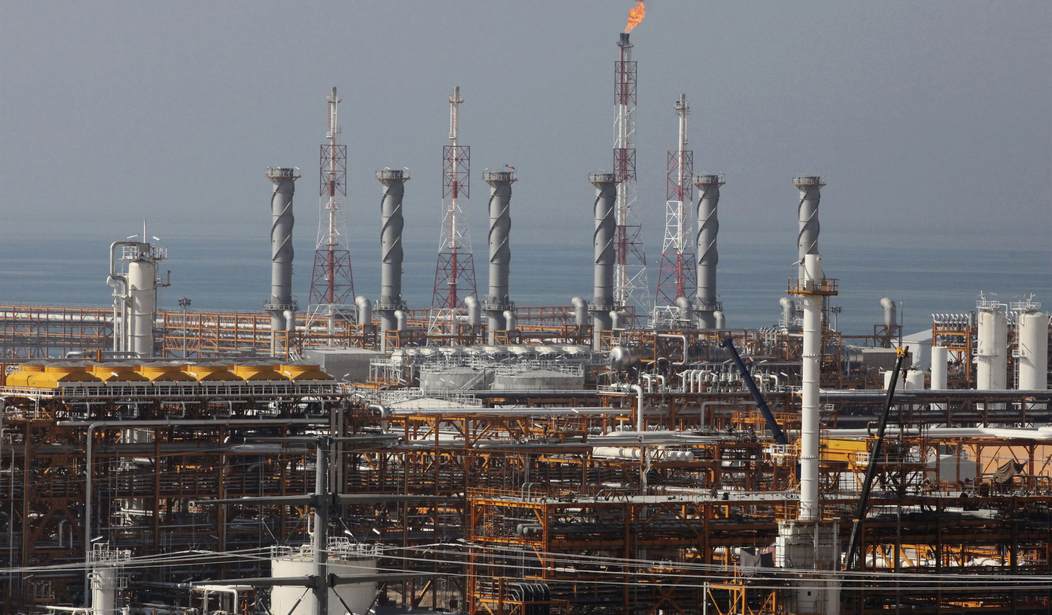Since 2010, the North American fracking revolution has radically affected global energy markets for the better, to the benefit of human beings who prefer prosperity to poverty.
Price-setting energy production capability by two politically free and stable economic power houses -- the U.S. and Canada -- has given both nations strategic freedom to maneuver and created an influential diplomatic tool.
However, if used wisely, the energy edge that fracking and other enhanced recovery technologies have given Washington and Ottawa is a tool that can benefit human beings in regions threatened by aggressive, dictatorial regimes -- regimes that create instability and prey upon fear.
Note I said energy diplomacy is influential, not decisive. But when combined in a power cocktail that includes U.S. military capabilities, economic sanctions, and the political and cultural influence of U.S. allies (like Canada), the energy tool adds convincing octane.
Iran, Russia and Venezuela provide current cases were the North American energy edge damages the dictators.
Let's define an essential term. Fracking is energy business slang for fracturing "tight" hydrocarbon-rich formations (shale, for example) in order to extract natural gas and crude oil that is otherwise trapped in the rock. According to geophysicists, North America has 1 to 2 trillion barrels (perhaps more) of "tight" oil and gas. Quite a hydrocarbon trove and one that shames the doom-mongers who, as late as 2008, were predicting "peak oil." Peak oil was a cool-kid term for the end of hydrocarbon energy. So you were supposed to commit to government-mandated -- and now Great Thunberg-scolding -- wind and solar energy.
Recommended
Nuclear was left out of the energy solution set because The Political Left and its media propagandists had spent three decades anathematizing nuclear reactor-generated electricity as a "capitalist plot" to destroy life on Earth. That propagandist crock, however, rates another column.
We turn to Iran. In June 2019, the terrorist ayatollahs who run Iraq learned the hard way that North American oil drillers and geologists have recast global geopolitics.
Since 1979, when the Ayatollah Khomeini toppled the shah, the Iranian Shia Islamic Revolutionary regime has ritually threatened to close the Strait of Hormuz, which connects the Persian Gulf to the Indian Ocean. In 1980, 35% to 38% of the world's daily crude oil requirement passed through Hormuz in the million-barrel holds of oil supertankers. In 2018 (latest figure), perhaps 30% transited Hormuz in oil tankers.
The 2019 object lesson: On June 10, benchmark crude oil sold for about $53.25 a barrel. On June 20, an Iranian missile destroyed a U.S. drone aircraft in the Strait of Hormuz. The drone downing was a classic Iranian chokepoint threat tactic. The attack, however, was a bust. Prices rose from $56.60 to $60.60 on July 10 and then dropped to $56.60.
Why? The oil glut created by North American fracking. Ayatollah economic warfare no longer has any economic and political teeth.
Russia: Oil and gas exports generate the Kremlin's hard currency. In February 2014, President Vladimir Putin, the current czar wannabe, ordered Russian soldiers to invade Ukraine's Crimean peninsula. In March 2014, Putin annexed the territory.
Czar Vlad bet Western European dependence on Russian natural gas would blunt objections to the invasion and territorial theft.
In 2014, however, the fracking edge began to cut into dictatorial dreams and delusional Kremlin calculations.
Venezuela: Dictator Hugo Chavez died before the energy edge sliced his Bolivarian delusion. Not so with Chavez's successor, Nicolas Maduro. In 2017, Maduro bet the price of oil would rise and generate enough cash to buy his crooked regime out of its miserable socialist hell of money laundering, propaganda and secret police brutality.
No need to risk the lives of U.S. Marines. Let the economic noose strangle the hideous Chavista regime, the noose created by U.S. and Canadian enhanced hydrocarbon recovery technology.

























Join the conversation as a VIP Member